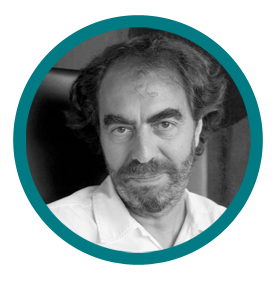Dr. Descoins was Research Director at INRA (the French National Institute of Agricultural Research). At a time when there was a huge gulf between biology and chemistry, this researcher came to give a lecture on insect pheromones. He was interested in problems relating to insects destroying crops in the Rhone Valley in France. The most striking thing was the way they identified the pheromones, the substances secreted by the females! Females were collected, mixed and placed in a purification column..
They then placed a male at the end and when it started to vibrate, they gathered the molecule it was emitting. They could thus identify and synthesise it. This molecule is still widely used today to avoid the use of insecticides and pesticides.
This lecture presented an industrial and environmental problem that linked both chemistry and biology. At that time I was doing my thesis in pure chemistry and it made me want to dip my toe into biology. Just one hour-long lecture was enough to change the direction of my whole career!

.
I spent 16 years of my career working in industry. Over the first 10 years, I was lucky enough to work in an exceptional environment with unlimited resources and total freedom. Unfortunately that research centre, the Merrel Research Institute as it was called then, was taken over several times and became more concerned with short-term profitability.
It was a simple choice for me: if I wanted to stay true to my values, I had to leave!
So I looked at changing career and was on the verge of becoming a teacher when I was offered my current job. If you work to further knowledge, to generate expertise, you have to be able to pass it on to others. Working in the public and academic sectors gave me back a real sense of freedom.
.
There are 70 people working in our laboratory. A pharmaceutical chemistry lab is quite unusual. We explore chemistry methodology and different approaches. For example, we are working on a family of biological receptors, the proteins on the surface of a cell – the family of receptors paired with G proteins (RCPG). There are 800 of them in our genome, 400 are for olfaction and 400 have a multitude of roles and are involved in practically all physiological functions (eyesight, smell, etc.).
We are trying to understand how they work on a mechanistic level, how they are structured, how they interact with hormones, neurotransmitters, what happens when they meet, when they bind to each other. The mechanistic part is the first thing, then we try to take a therapeutic approach. We try to see which receptor plays a key role in an illness. Depending on the disease, we try to either block the receptor with a molecule or activate it with a molecule to try to correct the imbalance caused by the disease.
In terms of disease, we work, for example, on themes relating to pain, to hyperalgesia. It’s a question that is far from being resolved; the only truly effective medication is still morphine. Five or six projects are under way and are focusing on targets that produce non-addictive, analgesic effects. It’s a strong project; Didier Rognan is planning to create a company and there are also patents currently being approved.